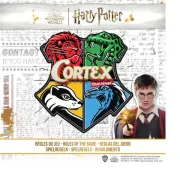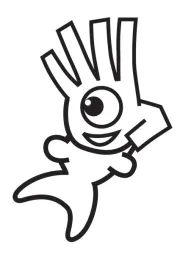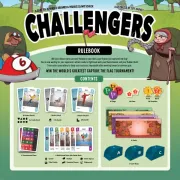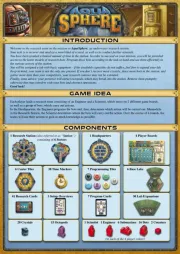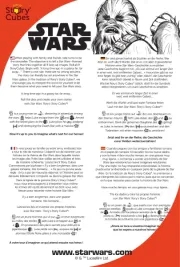
3
5
4
4
33
22
D
Robber
C
B
To get culture points, you have to build new settlements and/or upgrade settlements
to cities. To build new settlements, you must build roads. If you want to build
anything, you need resources.
How do you get resources? Each turn you determine which hexes produce resources
by rolling 2 dice. If, for example, you roll an “11”, all hexes with an “11” number
token produce. In the picture on the left, a mountain (ore), a quarry (stone) and a
jungle plantation (coca) all have “11” number tokens.
You may also buy resources with goods: feathers, fish, and coca. You generate goods
the same way you do resources—by building beside hexes that produce goods.
You only receive income if you own a settlement or city adjacent to the hex that
produces. In the picture, a red settlement (A) borders the “11” mountains and an
orange settlement (B) borders the “11” jungle. So, when you rolled that “11” Red
gets 1 ore resource card and Orange gets 1 coca goods card.
Most settlements and cities border on several hexes (maximum 3). Settlements and
cities “harvest” the hexes adjacent to which they are built. So, you might produce
up to 3 different types of resources/goods from the same settlement or city
(depending upon the die rolls in the game, of course). In our example, the blue
settlement (C) borders 3 hexes: quarry, jungle, and mountains. These hexes can
produce stone, feathers, and ore, respectively.
You cannot build settlements adjacent to every hex. So, your tribes may produce
some resources or goods very rarely, if at all. But to build new things you need very
specific combinations of resources. Therefore, you probably need to trade.
You can trade with other players. Make them an offer or listen to theirs. A successful
trade leads to success in building. You can also trade with the supply, but this is
generally less efficient.
You can only build a new settlement on an unoccupied intersection. However, you
must have one of your roads leading to that intersection, and the new settlement
must be at least 2 intersections away from ANY other settlement or city.
Think carefully about where you are going to build your settlements! The
numbers on the tokens vary in size. They also have pips (dots) below the numbers.
The larger the number (and the more pips it has), the higher the probability that
the number will be rolled. The red numbers (“6” and “8”) are the most likely to
be rolled. The more frequently a number is rolled, the more frequently the hexes
bearing that number produce resources and goods.
Catan – Rise of the Inkas Game Summary












